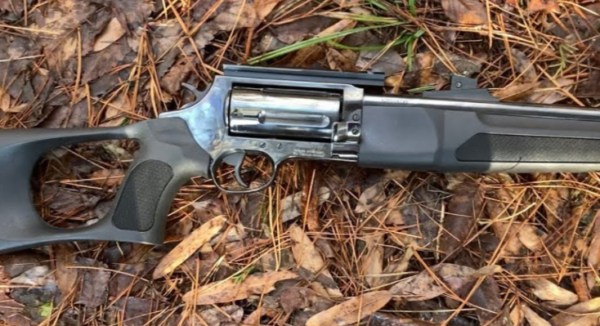The purpose of this article is to address some of the common problems faced by users of the Beretta A300 Outlander.
We’ll explore these issues, providing potential fixes to ensure your hunting experience remains top-notch.

Remember, it’s always important to fully understand your equipment and how to troubleshoot problems to ensure your safety and that of others around you.
12 Common Beretta A300 Outlander Problems
The Beretta A300 Outlander is generally reliable but may present issues such as cycling failures, extractor malfunctions, and jamming problems.
Difficulty in disassembly for cleaning, gas system failures, and improper ejection are also reported.
Some users find the synthetic stock less durable over time, and occasional misfires may occur. Lastly, while the trigger pull is generally smooth, it could be heavy for some users.
1 . Failure to Feed


Cause
One of the most common causes of failure to feed in the Beretta A300 Outlander is a dirty or improperly set gas system.
When residue builds up in the gas system, it inhibits the proper cycling of shells, leading to feeding issues.
Another potential cause could be the use of low-quality or incorrect ammunition weight.
It’s crucial to remember that the cleanliness and proper setting of the gas system are vital for the smooth operation of your shotgun.
Solution
To fix this, start by thoroughly cleaning the gas system, and removing all residual buildup.
Make sure to follow the manufacturer’s instructions during this process.
If the problem persists, check your ammunition. If it’s low-quality or the wrong weight, consider switching to a different kind.
2 . Ejection Issues
Cause
Ejection issues are another common problem with the Beretta A300 Outlander, often resulting from a dirty or damaged extractor or ejector.
Over time and with frequent usage, these parts can accumulate grime or even incur physical damage.
This may hinder their function, leading to issues in ejecting spent shells.
Solution
Addressing ejection issues requires careful inspection and cleaning of the extractor and ejector.
Follow the manufacturer’s instructions to disassemble these parts and clean them thoroughly.
If any signs of physical damage are detected, consider replacing the parts.
Regular inspection and cleaning can prevent ejection problems, while prompt replacement of damaged parts can restore your shotgun’s performance.
3 . Trigger Malfunction
Cause
Trigger malfunctions in the Beretta A300 Outlander typically arise due to misalignment or dirt accumulation in the trigger assembly.
This can result from extended use without proper cleaning, causing the trigger to either stick or misfire.
Proper alignment and cleanliness of the trigger assembly are paramount in ensuring the shotgun fires correctly every time.
Solution
The solution to trigger malfunction involves careful cleaning and inspection of the trigger assembly.
Refer to the manufacturer’s instructions to disassemble and clean each component. If the trigger is misaligned, professional attention may be required.
4 . Stock Breakage
Cause
Stock breakage in the Beretta A300 Outlander often occurs due to stress exerted on the stock during handling or transportation.
Frequent harsh environments or improper storage can also contribute to this problem.
It’s important to note that the stock is a critical component of your shotgun, and its integrity is fundamental to the firearm’s overall performance and safety.
Solution
The solution to stock breakage involves proper handling, storage, and periodic inspections of the stock for any signs of wear or damage.
If breakage is detected, it’s safest to replace the stock immediately to maintain optimal performance and safety.
5 . Loose Forend
Cause
A loose forend on the Beretta A300 Outlander often results from repeated recoil during firing or improper assembly after cleaning or maintenance.
Over time, these factors can cause the forend to loosen, impacting the shotgun’s balance and overall performance.
Take note that secure and properly fitted parts are crucial for the optimal performance and safety of your firearm.
Solution
Addressing a loose forend typically involves a careful examination and proper tightening of the component.
If it seems loose, refer to the manufacturer’s instructions to disassemble and reassemble the forend correctly, making sure it’s secure.
Consistent checks and proper assembly will ensure your forend remains tight, enhancing your shotgun’s performance and safety.
6 . Extractor Problems
Cause
Extractor problems in the Beretta A300 Outlander typically stem from a buildup of dirt and debris in the extractor groove or a worn-out extractor spring.
The accumulation of dirt can restrain the extractor’s movement, while a worn-out spring may fail to provide the required tension for the extractor to grip and eject the spent shell.
It’s crucial to understand that a well-maintained extractor with adequate spring tension is critical for the seamless operation of your shotgun.
Solution
To resolve extractor problems, it’s necessary to clean the extractor groove meticulously and consider replacing the extractor spring if it’s worn out.
Follow the manufacturer’s instructions for cleaning and maintenance.
7 . Difficulty in Disassembly
Cause
Difficulty in disassembling the Beretta A300 Outlander often arises due to a lack of familiarity with the shotgun’s design or improper use of tools.
This is a common issue, especially for first-time users or those who haven’t referred to the user manual thoroughly.
Understanding the design of your firearm and the correct use of tools is instrumental in ensuring a smooth disassembly process.
Solution
The solution to disassembly difficulties is two-fold. Firstly, make sure you have thoroughly read and understood the user manual, specifically the section dedicated to disassembly.
Secondly, ensure you are using the correct tools as recommended by the manufacturer.
A thorough understanding of the manual and the correct tools can significantly simplify the disassembly process.
If you continue to struggle, consider seeking assistance from a professional or an experienced user.
8 . Rough Recoil
Cause
Rough recoil in the Beretta A300 Outlander is often the result of using high-powered ammunition or due to lack of a proper recoil pad.
Heavy recoil can not only affect your shooting accuracy but also cause discomfort or even injury to the shooter.
It’s paramount to remember that the right ammunition and high-quality recoil pads can greatly reduce the impact of recoil, ensuring a smooth and comfortable shooting experience.
Solution
The first step to mitigate rough recoil is to select the right ammunition for your needs.
Lighter loads typically offer less recoil, making them an excellent choice for recreational shooting.
Additionally, equipping your shotgun with a high-quality recoil pad can absorb the shock, reducing the strain on your shoulder.
Choosing the right ammunition and investing in a good-quality recoil pad are key measures to alleviate the discomfort caused by rough recoil.
If the recoil remains harsh despite these steps, consider seeking professional advice.
9 . Gas System Malfunction
Cause
Gas system malfunction in the Beretta A300 Outlander is often the result of the buildup of dirt, grime, or fouling in the gas ports.
This can restrict the flow of gas needed to cycle the action, leading to stove-piping or cycling failures.
It’s important to remember that regular cleaning and maintenance of the gas system is crucial to prevent malfunctions and ensure the smooth operation of your shotgun.
Solution
Addressing a gas system malfunction primarily involves thorough cleaning of the gas ports and the entire gas system.
Use a good-quality firearm cleaning solution and follow the manufacturer’s cleaning instructions meticulously.
10 . Misfires
Cause
Misfires in the Beretta A300 Outlander are often due to a variety of factors, with common causes being poor ammunition quality, a dirty or worn-out firing pin, or improper maintenance.
Poor quality or old ammunition may fail to ignite, while a dirty or worn-out firing pin may not strike the primer forcefully enough.
Solution
Addressing misfires involves several steps. Firstly, ensure you’re using fresh, high-quality ammunition.
Secondly, inspect the firing pin for any signs of wear or dirt and clean or replace it as necessary.
Finally, keep up with routine maintenance, paying particular attention to the cleanliness and condition of the firing chamber.
Quality ammunition, a well-maintained firing pin, and regular firearm maintenance are key to preventing misfires.
If misfires continue despite these measures, don’t hesitate to consult a professional.
11 . Barrel Rust
Cause
Barrel rust is a common issue with the Beretta A300 Outlander, primarily resulting from exposure to moisture.
Whether it’s from a humid environment, rain, or even sweat from your hands, moisture can lead to oxidation on the metal surface of the barrel.
Remember, moisture is the primary enemy when it comes to rust formation.
Constant exposure to a damp environment without proper care can accelerate rusting, compromising the longevity and performance of your shotgun.
Solution
The key to preventing and treating barrel rust lies in regular maintenance and proper storage.
Ensure the barrel is cleaned and oiled after each use, especially if it has been exposed to water or sweat. When not in use, store the shotgun in a dry, cool environment.
For more severe rusting, consider consulting a professional to have the rust removed and the barrel refinished if necessary.
Regular cleaning, proper oiling, and dry storage can effectively prevent rust formation.
12 . Excessive Noise
Cause
Excessive noise while firing the Beretta A300 Outlander is often attributed to the use of high-velocity ammunition or a lack of a proper muzzle brake.
The higher the velocity of the ammunition, the more noise it produces when fired.
Similarly, the absence of a muzzle brake, which helps redirect noise, can contribute to an increase in perceived noise levels.
Remember, the choice of ammunition and the use of proper accessories like a muzzle brake can play a significant role in determining the noise level during shooting.
Solution
To mitigate excessive noise, consider switching to a lower velocity ammunition which generally produces less noise upon firing.
Additionally, using a muzzle brake can also aid in redirecting the noise away from the shooter, thereby reducing the perceived noise levels.
Note that choosing the right ammunition and incorporating noise-reducing accessories like a muzzle brake can significantly bring down the noise levels.
Conclusion
In conclusion, while the Beretta A300 Outlander is a reliable and high-performing shotgun, users may occasionally encounter some issues.
These problems range from failure to feed and ejection issues to trigger malfunctions and stock breakages.
Even issues such as a loose forend, extractor problems, difficulty in disassembly, rough recoil, gas system malfunction, misfires, barrel rust, and excessive noise might occur.
FAQs
Is the Beretta A300 a good gun?
Yes, the Beretta A300 is a highly reliable firearm, well-regarded for its performance and durability.
Is the A300 Outlander discontinued?
No, the Beretta A300 Outlander is not discontinued and remains a popular choice among hunters.
Where is the Beretta A300 Outlander made?
The Beretta A300 Outlander is manufactured in the Beretta factory located in Italy.
Is the Beretta A300 self-cleaning?
While the Beretta A300 has a self-cleaning gas piston, regular manual cleaning is still necessary for optimal performance.


As the founder and owner of the domain “mygunsgeek.com”, I bring to the table a deep passion for firearms, combined with a strong commitment to sharing this knowledge with a wider audience. With years of experience exploring the inner workings of various firearms, from pistols to rifles, I have cultivated a vast expertise in this field. This has enabled me to create a platform that serves as a trusted resource for gun enthusiasts, providing comprehensive reviews, advice, and insights into the latest trends and advancements. I am dedicated to ensuring that my content is both informative and engaging, helping my readers make informed decisions about their firearm choices. For any inquiries or suggestions, feel free to reach out to me at wwwfffwww117@gmail.com. Your feedback is invaluable in shaping the content and direction of mygunsgeek.com.


